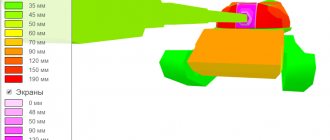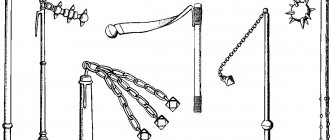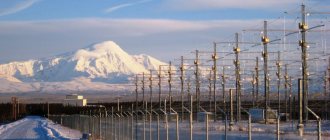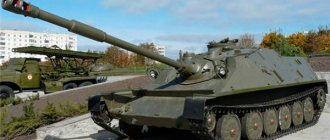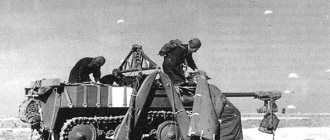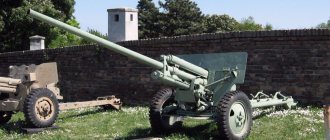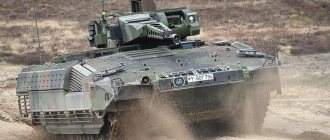Mines appeared at the dawn of the gunpowder era of mankind. Originally designed to destroy fortified structures, they later became one of the main elements of defense in the wars of the last hundred years.
Minefields, traps, remote charges - all this is an almost insurmountable obstacle for the advancing troops. However, our designers managed to solve even this problem by creating the newest type of weapon - demining installations. The most successful model of such equipment is the Soviet UR-77 installation.
A little history
Note that the first modern mine clearance systems were created by the British in 1912. Moreover, initially these weapons fought not against mines, but against barbed wire. To explode them, a 5 m long pipe was used, which was charged with 27 kg of pyroxylin. The ammunition was slipped under the barrier and exploded. Due to its long shape, the ammunition was called a torpedo.
In the USSR, the first means of mine clearance appeared during the war, and it was an extended U3 charge: it was a pipe 2 m long and 7 cm in diameter, into which a little more than 5 kg of TNT could be placed. The essence of its action was that a tank with a trawl pulled out charges to clear mines, after which they were detonated. Despite the effectiveness of such a system, it had many shortcomings. First of all, mine clearance took place quickly, and its preparation required a lot of time.
Original nickname
Nicknames of heroes of folk epics are extremely rare even in our troops, which are generous with nicknames and sobriquets.
During the first experiments with self-propelled mine clearance systems, the UZ-3R vehicle entered service with the Soviet army, which was the same “Bangalore torpedo”, only built by us and equipped with 45 jet engines. However, due to errors in the electronics, the engines started with a difference that was minimal but curious enough.
Such malfunctions caused an amusing spectacle - the charge was thrown in the air, and flames burst out of the thruster nozzles. Such a flight seemed similar to the fire-breathing flying villain from Russian folklore - “The Serpent Gorynych”, which gave this nickname to all subsequent mine clearance installations that were built on the main idea of this device.
UR-67
“Zmey Gorynych” is a weapon based on the UR-67. This mine clearance system was used to combat anti-tank mines. True, the first version was not the most advanced, and the UR-67 was replaced by the UR-77 “Meteorite,” which is still considered the main vehicle of this type in the Russian army. While maintaining the main design features of the system and its operating principle, it began to be equipped with new ammunition. The extended charge 77 is based on detonating cables more than 10 m long, which are connected into a single cord with cap nuts.
The first demining installations
UR-67
Testing of explosive destruction of both infantry and tank barriers began in the early 20th century. The British military engineer McClintock constructed a means of overcoming barbed wire barriers from a metal pipe and an explosive charge: an extended charge (EL) was placed under the barrier and detonated. The gun was named after the Indian city where the inventor served - “Bangalore Torpedo”.
During operation, the torpedo underwent many modifications: the charges were connected to each other for greater explosive power, fastening mechanisms were changed, and wheels and skis were attached to the torpedo for mobility. During the Great Patriotic War, the torpedo became part of the armament of both the Allied army and the Wehrmacht.
Why “Snake Gorynych”?
The weapon, the photo of which speaks of its menacing nature, received this name for a reason. This is due to a powerful and scary spectacle: first there is a deafening roar of a rocket engine, after which a short rocket soars into the sky, and something white is trailing behind it. After uncoupling, the rocket flies forward, and a long “sausage” falls to the ground, after which a heavy explosion shakes the ground.
Gorynych's competitors
Many countries use the principle of explosive demining. The closest competitor to us is Dient Viper (Great Britain). This 180 meter long mine clearing installation has 8 jet engines. The clearing strip is 180 meters long and 7 meters wide. But this installation is not self-propelled; it is delivered to the launch site by special vehicles, after which it is installed permanently on the ground.
How the design has changed...
It is noteworthy that when creating the model, the designers proposed abandoning the basic tracked vehicle. This type of mine clearance system was designated UR-83P; it was transported on a truck, after which it was assembled directly on the battlefield, in a tank trench.
The tank installation had a lightweight frame, but the system was not widespread because it was much weaker in terms of efficiency. In wartime, the “Serpent Gorynych” (a weapon that is still considered one of the most reliable in the world) was an excellent assistant in overcoming minefields. At least there was an opportunity to save the lives of sappers and miners.
What are the features?
“Serpent Gorynych” is a weapon that has been constantly improved. Thus, the model’s chassis is based on the design of the MT-LB tractor. Features of the new model include:
- A special tower cap protects the launch guide of the exhaust rockets and the cord boxes. This is an important innovation, because armored ammunition boxes consist of more than 1,500 tons of explosives. Before starting, the armored cap is raised to the desired angle, then only three buttons are activated: starting the solid propellant engine, detonating the charge, and releasing the brake rope.
- Recharging the unit takes about 40 minutes.
- The explosive cord can be laid by a crane or manually.
- “Serpent Gorynych” is a weapon that can even be launched from water.
This installation was first used in combat in 1973 - at that time the weapon was supplied to Egypt. Subsequently, the models participated in almost all military operations of the USSR and Russia.
How does it work?
The UR-77 is a lightly armored self-propelled mine clearing unit that can make 6 m wide passages in minefields that are crammed with anti-tank anti-track mines and mines with pin target sensors. Experts note that the system easily and reliably copes with detonating high-explosive anti-personnel mines (similar to the American M14) in a strip up to 14 m wide.
One of the most reliable means of mine clearance today is the “Serpent Gorynych” system (weapon). How to use it? Mines explode due to the fact that their own fuses are triggered by the shock wave. It, in turn, is formed during the explosion of an extended mine clearance charge. The installation itself includes two elements - the base vehicle in the form of a modified chassis and the turret installation, consisting of launch guides for two missiles and two compartments for sections of the detonating cable.
Performance characteristics and analogues
Only two countries in the world have truly competitive cars.
The only comparable model of such equipment in terms of characteristics is the American M58 “MICLIC” missile launcher, however, a significant drawback compared to the Russian model is that the installation is placed on a towed trailer and is not capable of moving independently.
| UR-77 | M58 | |
| Passage length, m | 80-100 | 100 |
| Explosive mass. kg | 41-725 | 794 |
| Passage width, m | 6 | 6-14 |
As we can see from the comparison table, the UR-77 is inferior to its Western competitor only in terms of aisle width. However, this parameter depends solely on the type of charge, the improvement of which is only a matter of time for designers.
Based on the Gvozdika howitzer
“Zmey Gorynych” is a mine clearance weapon that, thanks to its unique characteristics, has remained popular for decades. The equipment used is the 2S1 “Gvozdika” self-propelled howitzer, which has a classic turret design. Its body is created on the basis of steel sheets, is characterized by tightness and the ability to overcome water obstacles. The building has three sections: power, control and combat.
On the roof there is a welded turret, the fighting compartment of which is equipped with a rotating basket. The turret is equipped with a gun and space for the crew. On the starboard side there is a loader's seat, stowage for cartridges, and on the left side there is a gunner's seat and sighting devices. The main weapon is a howitzer, which uses 122 mm ammunition. The howitzer operates using high-explosive fragmentation shells of various types, which are often supplemented with contact fuses. The maximum firing range is 15.2 km.
Ammunition system "Zmey Gorynych"
The principle of operation of the weapon is as follows: it is assumed that a certain amount of ammunition is used. It includes two extended mine clearance charges that have solid propellant tug missiles. One charge is designed for one pass, that is, the installation with one ammunition can make two passes at once, 93 m long and 6 m wide. During combat operations, the installation itself can be located both in a shelter and in open areas. The charges are launched with a short pause. Charges can also be launched from the water when it is necessary to clear minefields along the coastline.
Combined arms demining kits OVR-1 and OVR-2
| 1 — device for non-detonation destruction of UBRM mines |
| 2 — extended mine clearing charge |
| 3 — KRAG throwing device |
| 4 - special cat |
| 5 — K8-S helmet, FZS sapper frontal protection, sapper probe |
Designed for continuous mine clearing and making passages in minefields. The kits allow you to:
- conduct preliminary reconnaissance of the area;
- make passages in minefields of anti-tank and anti-personnel mines using special and universal cats, extended mine clearance charges, delivered using a throwing device at a distance of up to 50 m;
- destroy mines and other explosive objects installed in the ground and on the surface of the ground;
- carry out reconnaissance in buildings using an extension rod, an IMP-2 mine detector and an antimagnetic probe;
- mark the boundaries of minefields and explosive ordnance sites using anti-magnetic flags and warning signs.
The OVR-1 set is intended for combined arms units and contains the equipment necessary for conducting mine-search operations, including:
- KRAG throwing device;
- sapper cat 019B;
- sapper probe IYAUSH;
- warning signs, flags, tapes.
The OVR-2 set is intended for units of the engineering troops; it differs from the OVR-1 set in additional equipment, including the presence of special means for neutralizing explosive devices:
- device for non-detonation destruction of mines UBRM;
- KRAG throwing device;
- extended mine clearance charge UZR-1Sh;
- device KVP-4/100
The main thing is setting
Powerful and modern “Serpent Gorynych” weapon. The operating principle of the entire mine clearance system is as follows:
- The UR-77 makes a passage and moves towards the minefield, while it can stand at a distance of 200-500 m.
- The distance to the border of the minefield is determined by the commander, who raises the turret installation to a certain elevation angle, after which he gives the command to launch the charge.
- The missile emerges from a guide and flies along a certain trajectory, while pulling behind it a flexible cable connected to an explosive.
- The rocket with the charge moves away to a length determined by the length of the brake rope - it is attached to the nose of the vehicle.
- The charge falls on the minefield, and the rocket propellant motor is cut off.
- The driver moves the car backwards to level the charge into a straight line.
- The brake rope comes off.
- The time for a full cycle of making a passage takes a maximum of 5 minutes
- After the first cycle is completed, the second charge is started.
- Recharging the car takes about 40 minutes.
To carry out this procedure, the machine moves to a predetermined location. Reloading time by a crew with an attached sapper squad is 30-40 minutes.
New technologies
When rocket powder engines were placed between the sections, they lifted the entire structure up and pulled it forward. Effective and instant.
It looked like this. An UZ-3R was delivered to the front line in the Urals, after which sappers assembled a truss up to 100 meters long from pipes. It was installed at a position 300 meters from the nearest minefield border. When artillery destroys enemy positions, the UZ-3R receives an order to launch a shell - and all 45 jet engines turn on simultaneously. The unit flies at a height of up to 1 meter, runs into the enemy’s brake cable and falls. An explosion - and a 6-meter wide passage for tanks and infantry is ready.
What are the prospects?
“Serpent Gorynych” (UR-77 weapon), which was also called “Meteorite” in the war, was again transferred to the Russian Federation in 2014, albeit in a new form. The updated installation was developed by the Balashikha Research Institute and designers of the Rubtsovsk Machine-Building Plant. The base of the BMP-3 combat vehicle was used as the chassis for this model. The launcher is additionally equipped with extended mine clearance charges.
“Snake Gorynych” is a weapon in Russia that is popular due to its thoughtful design and technical characteristics. With their help, you can make passages in a minefield several tens of meters wide at any distance. The updated charges are capable of destroying any types of mines. The charge of this installation is a rocket to which a long cable is attached: explosives are located on it. When the cable falls to the ground, the explosive detonates and detonates mines within a radius of several meters. This creates a safe passage through which infantry can pass and military equipment can pass.
As noted by the experts who tested this system, the mine clearance charges detonate some of the mines. And devices that are protected from explosion are thrown outside the cleared passage. In any case, in combat conditions this installation will be more effective.
Super snake
However, the Soviet army did not stop there. Using clamps, three US charges were connected into a triangular section US-3. From such sections it was possible to assemble a demining charge (8 kg of TNT per linear meter) up to 100 meters long. The explosion of an extended charge delivered to the minefield by a tank with a trawl caused the mines to go off in a strip six meters wide.
The UZ-3 charge became the hobby of the generals of the engineering troops. The explosion of such a quantity of explosives spread over 100 meters was extremely spectacular for the military leaders present at the exercises - both ours and foreign ones. Finally, the sappers had the opportunity to clearly and effectively show their work: it looked no less beautiful than the bomb “path.”
However, Marshal of the Engineering Troops Kharchenko soon came to the conclusion that all existing methods of making passages in minefields did not meet the requirements of tankers. Passages in enemy minefields must appear suddenly and instantly. The instantaneous charge of the UZ-3 is ensured. But suddenness is a bad thing. A lone tank, slowly crawling across the field and pulling a mine clearance charge behind it, clearly cannot provide it.
Features of the updated system
It is planned that the UR-07M model, which will replace the Zmey Gorynych installation, will easily cope with mine clearance of the coastal strip. With its help, it will be possible to make passages of sufficient width in the coastal line of the sea at a depth of up to five meters. The passages will be made gradually - by launching groups of ammunition from a carrier moving along the shore, after which they will be detonated at the passage target. It is noted that the ship's pitching will not affect the accuracy of the supply of ammunition, since this will be compensated by automatic fire control based on a computer. The designers emphasize that the “Snake Gorynych”, as a mine clearance weapon, still requires a re-evaluation of both design and technical parameters in order to meet modern requirements. That is why it was decided to improve the old system by introducing modern technologies into it.
As an addition to the system, there is a URP-01 Garter trailer, which allows you to make passages in anti-tank minefields. The charges are launched both from towing equipment, without requiring the crew to exit the vehicle, and autonomously - on the ground or from a trench.
